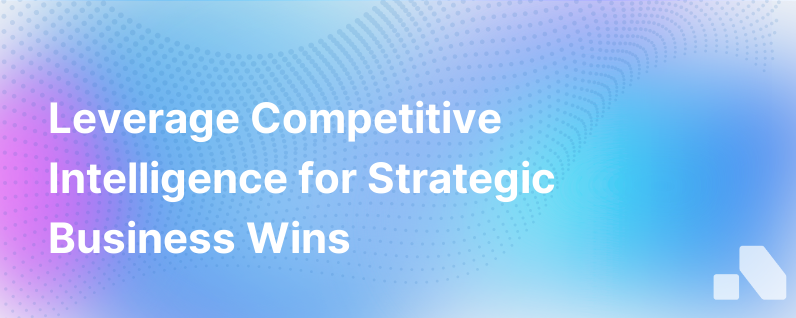
Competitive intelligence is a crucial component of a business strategy. It equips your company with insights to outmaneuver competitors, adjust to market changes, and identify opportunities for growth. However, gathering, analyzing and integrating competitive intelligence into the company's strategy often remains a challenge. This article will guide you through the process and importance of integrating competitive intelligence into your business strategy.
What is Competitive Intelligence?
Competitive intelligence (CI) scope is extended to gather, analyze, and utilize information about your competitors, their strategies, strength, and weaknesses, and the overall market. It holds the power to provide insights into what your competitors are planning, allowing you to anticipate their steps and plan accordingly.
Why is Competitive Intelligence Important?
The value of competitive intelligence is undeniable. It provides a comprehensive view of the competitive landscape, allowing you to foresee market changes and trends. CI can help your company:
- Stay Ahead: By understanding market trends and competitors' strategies, you can stay one step ahead in innovation and marketing tactics.
- Risk Mitigation: It can reveal hidden threats and opportunities in the market, helping devise strategies to mitigate risks.
- Inform Decisions: It provides data-backed insights that inform key strategic decisions in sales, marketing, and product innovation.
- Customer Retention: By understanding what works for your competitors, you can develop strategies to retain and win-back your target customers.
How to Integrate Competitive Intelligence?
-
Set Clear Objectives: Define what you expect to achieve with competitive intelligence. It may be to inform strategic decisions, predict market trends, or outperform competitors. Clear objectives will guide your CI data collection and interpretation.
-
Identify Sources: Competitive Intelligence can be gathered from both primary and secondary sources. Primary sources might involve direct interactions with competitors at trade shows or industry events. Secondary sources include online resources like news articles, social media posts, product reviews, financial statements, and industry reports.
-
Collect & Analyze Data: Once you've earmarked your sources, gather all relevant information about your competitors and market. Examine their product features, market share, financial situation, and marketing strategies. This data analysis will highlight trends, patterns, and gaps that inform your competitive strategy.
-
Implement Findings: This is where the real integration happens. Deep dive into the insights gained through analysis to align them with your business strategy. This could be in the form of adjusting marketing strategies, revising sales pitch, refining your product to fill gaps, or any strategic shift to outpace your competitors.
-
Monitor Continuously: Competitive intelligence is an ongoing process. Businesses evolve, and so do their strategies. Keep monitoring your competitors and market to stay current with the changing scenarios.
-
Communicate the Insights: Share the insights with your team. It empowers sales teams to tackle competitor obstructions, helps marketing teams position products effectively, and allows leadership to make more informed business decisions.
Leveraging Tools for Competitive Intelligence
While manual collection and analysis of competitive intelligence are possible, it's time-consuming and often lacks depth. Here's where competitive intelligence tools like Aomni can be revolutionary.
These tools automate the competitive intelligence process, offering real-time insights into your competitors. Aomni is an AI platform that delivers real-time account research, actionable competitive insights, and personalized sales content. By leveraging such tools, your team can focus more on deploying strategies rather than hunting for information.
Conclusion
In a highly competitive business world, merely gauging your internal business health is not enough. You need to maintain a sharp eye on your business environment, including your competitors, to stay ahead of the game. Whether you are looking to increase your market share, introduce a new product, or strategize your future moves, integrating competitive intelligence is vital. Utilizing AI-powered tools like Aomni can significantly lessen efforts and produce more accurate and up-to-date insights in less amount of time. Remember, knowledge is power. And in business, competitive knowledge can be the game-changer.